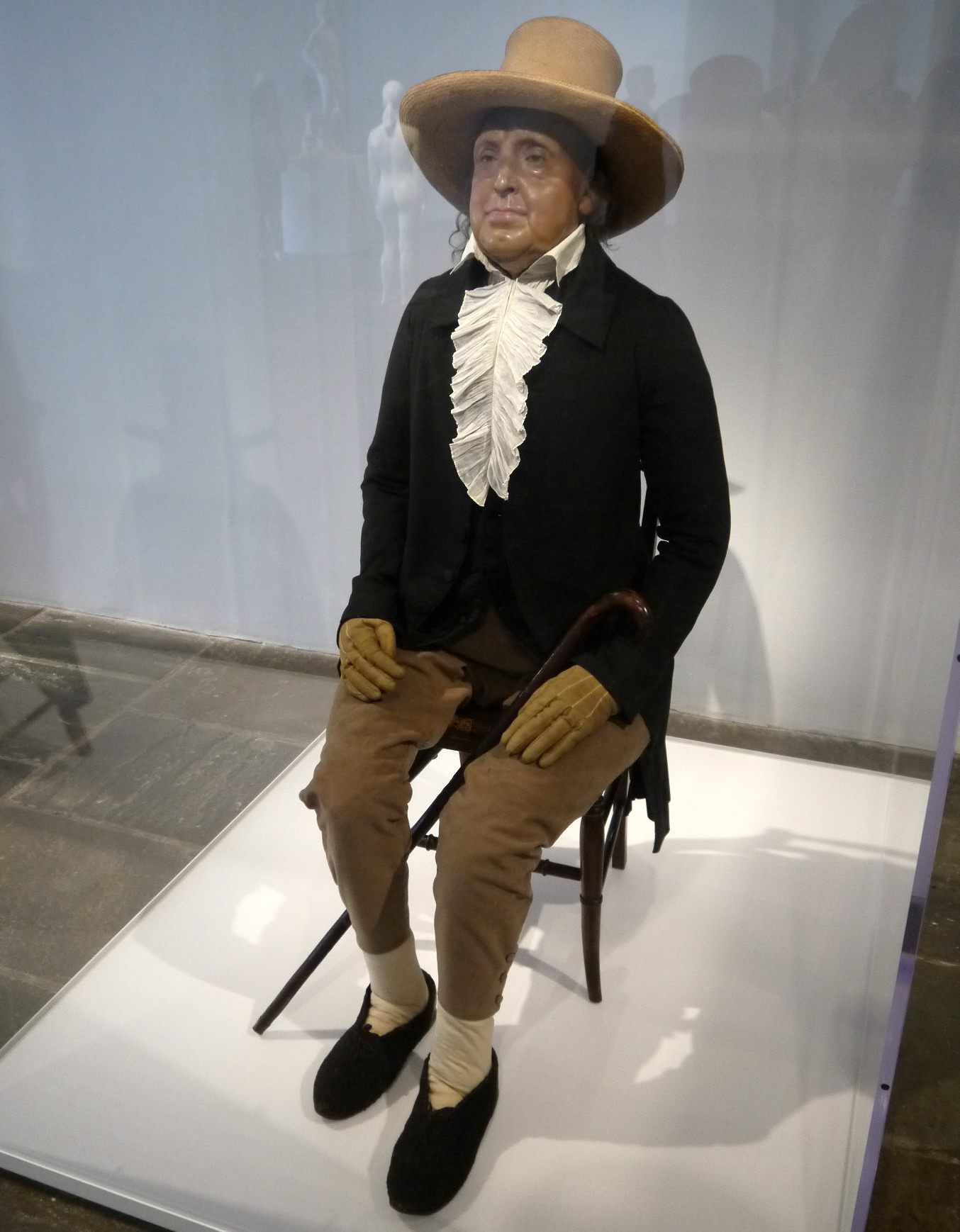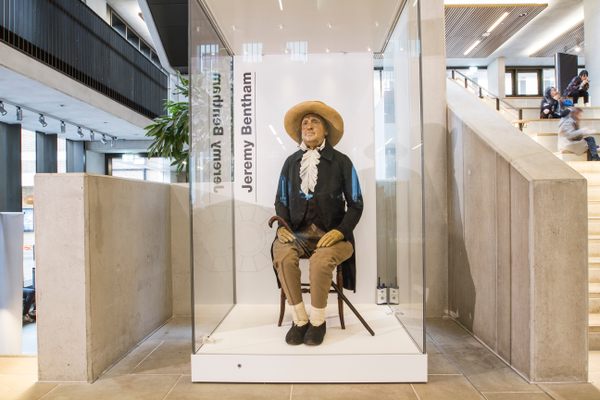Lost: Rings Holding the Hair of Philosopher Jeremy Bentham
Among the elaborate plans for his death were 26 Victorian mourning rings. What happened to them?

Before he died in 1832, philosopher Jeremy Bentham set his affairs in order in a way that few people will ever do. This pre-death planning went way beyond bequeathing old books or settling debts. Bentham famously insisted that his corpse be dissected and partially embalmed—then reassembled, padded out, clad in a smart outfit, and perched on a chair. From there, Bentham’s “auto-icon,” as it’s known, could continue to participate, in a way, in lively debate with his peers, well after Bentham himself had passed on.
His will was done. Save for a brief recent jaunt to America, where it was on display at New York’s Met Breuer museum, the auto-icon has stayed fairly close to home. You can visit him, most days, in his comfy accommodations at University College London (UCL).
The auto-icon wasn’t Bentham’s only pre-death plan. He also commissioned mourning rings bearing his bust and—in quintessential Victorian fashion—snippets of his hair. Bentham chose 26 recipients for these pieces of memorial jewelry. Each band carries the name of its recipient and the dates of Bentham’s birth and death. Work on the bands likely began a decade before he died, when Bentham had the portrait sketched by John Field, known for his ability to dash off silhouettes in five minutes or less. His assistant tagged along on the sitting, bearing plaited bits of his hair.
When Bentham died, the rings fanned out across the the world—to French military commander Marquis de Lafayette, for instance, and to intellectual and politician José Cecilio Díaz del Valle, a former mayor of Guatemala City. Today, few of the rings are accounted for, and a team at UCL wants to know where the rest of them ended up.

UCL is in possession of four of the rings, and one inscribed to French economist Jean Baptiste Say was auctioned off at Christie’s in June, where it fetched £11,250. Another ring is known to have remained in the family of William Stockwell, who worked for Bentham as a servant. That leaves 20 missing pieces of Bentham. Tim Causer, senior research associate at the UCL’s Bentham Project, is among those leading the project to find them. Causer invites anyone who comes across one to get in touch with him. They could be anywhere: One of the rings in UCL’s collection, made for fellow philosopher John Stuart Mill, surfaced at a jewelry shop in New Orleans.
The researchers hope that mapping the rings’ routes through the world can deepen their understanding of the philosopher’s reach. “I’d like to think that tracking down the remaining rings would be a physical manifestation of just how far and wide Bentham’s ideas traveled, and of his influence in Europe and the Americas,” Causer says. Among his philosophical contributions was utilitarianism, under which he emphasized the importance of the greatest happiness for greatest number of people.
And if those bands ever get back together? An exhibition at UCL would be likely, Causer says. A totally normal one, no funny business: “Best not to mention the specially constructed underground vault in which we’ll gather all 26 rings to perform the ceremony to bring the auto-icon back to life.”
















Follow us on Twitter to get the latest on the world's hidden wonders.
Like us on Facebook to get the latest on the world's hidden wonders.
Follow us on Twitter Like us on Facebook